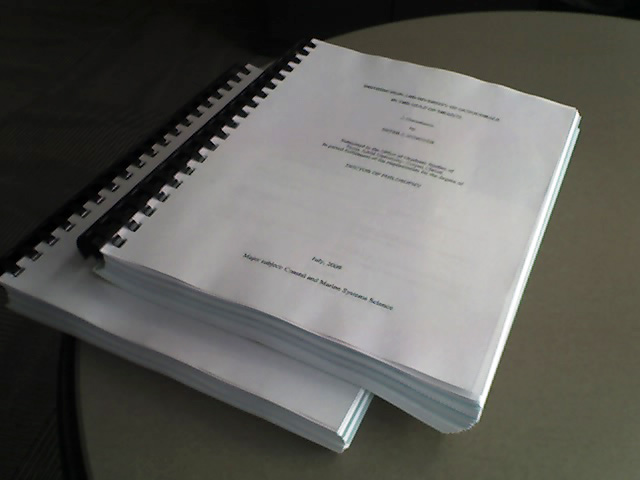Constructon dissertation guide part 3 - Research strategy
This is part of a series of Construction Dissertation Guides for students. Click here for the whole series.
After collating relevant material and deciding on a focus for the analysis, the next stage is to design an appropriate research strategy, that is, the way in which the research objectives can be questioned.
Very broadly, there are two types of research strategies available – ‘quantitative’ and ‘qualitative’.
Contents |
[edit] Quantitative
Quantitative research is an objective measure of definable factual evidence such as numbers and statistics that are capable of being analysed to determine the validity of a hypothesis.
Quantitative research can be used deductively to test a theory that can be presented in one of two ways:
- A hypothetical statement such as ‘if x then y’.
- An educated ‘guess’.
Data accumulated through the research process should help to prove or disprove the hypothesis.
[edit] Qualitative
Qualitative research is a more subjective measure of descriptions, views, opinions, and alternative theories. Depending on the approach taken, the research may use a smaller sample than quantitative research, but the data obtained can be more personal and in-depth. The relationship between the theory and the research is emergent or developing.
Broadly, the two categories of qualitative research are exploratory and attitudinal:
- Exploratory research is used primarily to gain a greater understanding of a particular subject. It is useful for diagnosing a situation, considering alternative ideas and discovering new ones that haven’t been previously considered. The most common method of exploratory research is interviewing, where the raw data will be the transcribed answers. Another common method is a questionnaire (usually with open-ended questions).
- Attitudinal research is used to evaluate the opinions or views of individuals in a way that is subjective. Examples are questions that ask the individual to express their level of agreement with a statement, or to rank preferences.
[edit] Data collection strategies
[edit] Primary data collection
The main approaches to primary data collection are:
[edit] Surveys
Used to gather data from a large sample size within a defined time frame. Surveys can be descriptive, asking what?, where?, when?, and so on, or analytical, establishing the relationship between attributes of the survey.
[edit] Case studies
A small number of specific example analysed as a means of supporting the overall argument. Conclusions drawn will be related to the particular case studies and may not be easily generalised to the rest of the industry.
[edit] Problem-solving / experimentation
This is a more action-based option, where certain changes are introduced/proposed and the impacts observed and analysed. This may for example involve experimentation. Particular skills, and sometimes equipment can be required for problem-solving research and so it is not always suited to the time and resource restrictions of a dissertation project.
[edit] Secondary data collection
The data (statistical and/or descriptive) is sourced and accumulated from others rather than being obtained first-hand. It can be used to substantiate or clarify points being made by the researcher. This can be more efficient an approach in terms of time and cost, and can also assist in terms of useful comparisons between data collected via the primary methods. However, it may be more difficult to develop independent conclusions, and may not demonstrate to examiners that the researcher has the ability to accumulate primary data.
[edit] Statistical
These can be found in libraries and online, such as those conducted and published by leading institutions including RIBA, RTPI, BRE, CIOB, RIBA, CIRIA, ICE, IStructE, CIBSE and so on. See Construction industry institutes and associations for more information.
[edit] Descriptive
This is similar to analysing content during the literature review. With an eye on how relevant, factually accurate and reliable it is.
[edit] Check your approach
It is very important at this stage that you discuss your approach with your supervisor to ensure it is suitable before proceeding with the actual research.
Continue to the next stage: Questionnaires and interviews.
Featured articles and news
The UK's Modern Industrial Strategy: A 10 year plan
Previous consultation criticism, current key elements and general support with some persisting reservations.
Building Safety Regulator reforms
New roles, new staff and a new fast track service pave the way for a single construction regulator.
Architectural Technologist CPDs and Communications
CIAT CPD… and how you can do it!
Cooling centres and cool spaces
Managing extreme heat in cities by directing the public to places for heat stress relief and water sources.
Winter gardens: A brief history and warm variations
Extending the season with glass in different forms and terms.
Restoring Great Yarmouth's Winter Gardens
Transforming one of the least sustainable constructions imaginable.
Construction Skills Mission Board launch sector drive
Newly formed government and industry collaboration set strategy for recruiting an additional 100,000 construction workers a year.
New Architects Code comes into effect in September 2025
ARB Architects Code of Conduct and Practice available with ongoing consultation regarding guidance.
Welsh Skills Body (Medr) launches ambitious plan
The new skills body brings together funding and regulation of tertiary education and research for the devolved nation.
Paul Gandy FCIOB announced as next CIOB President
Former Tilbury Douglas CEO takes helm.
UK Infrastructure: A 10 Year Strategy. In brief with reactions
With the National Infrastructure and Service Transformation Authority (NISTA).
Ebenezer Howard: inventor of the garden city. Book review.
The Grenfell Tower fire, eight years on
A time to pause and reflect as Dubai tower block fire reported just before anniversary.
Airtightness Topic Guide BSRIA TG 27/2025
Explaining the basics of airtightness, what it is, why it's important, when it's required and how it's carried out.
Construction contract awards hit lowest point of 2025
Plummeting for second consecutive month, intensifying concerns for housing and infrastructure goals.
Understanding Mental Health in the Built Environment 2025
Examining the state of mental health in construction, shedding light on levels of stress, anxiety and depression.






















